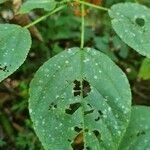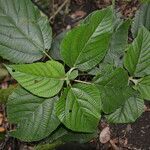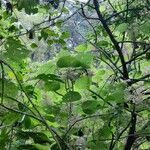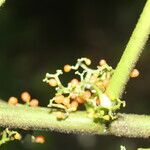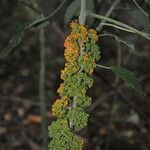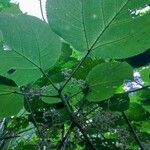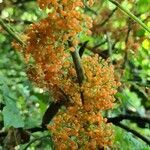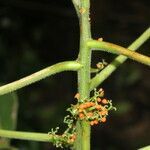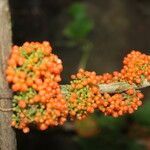Shrub or small tree, 2-10 m. high, with elongate branches, the young twigs, petioles, inflorescence, and leaf nerves usually armed with stinging hairs; leaves broadly ovate to ovate-lanceolate, up to 30 cm. long and 25 cm. wide, acuminate, cordate or cordulate at the base (basal lobes sometimes overlapping), crenate-dentate, scabrous, sometimes verrucose, above, more or less pubescent beneath; plants dioecious, the cymes regularly dichotomous; staminate flowers sessile in distinct, compact glomerules; pistillate flowers sessile or pedicillate in compact glomerules (rachis and segments sometimes becoming enlarged), the segments usually densely covered with white, punctiform cystoliths; achenes 0.5-1 mm. long.
A small tree.
